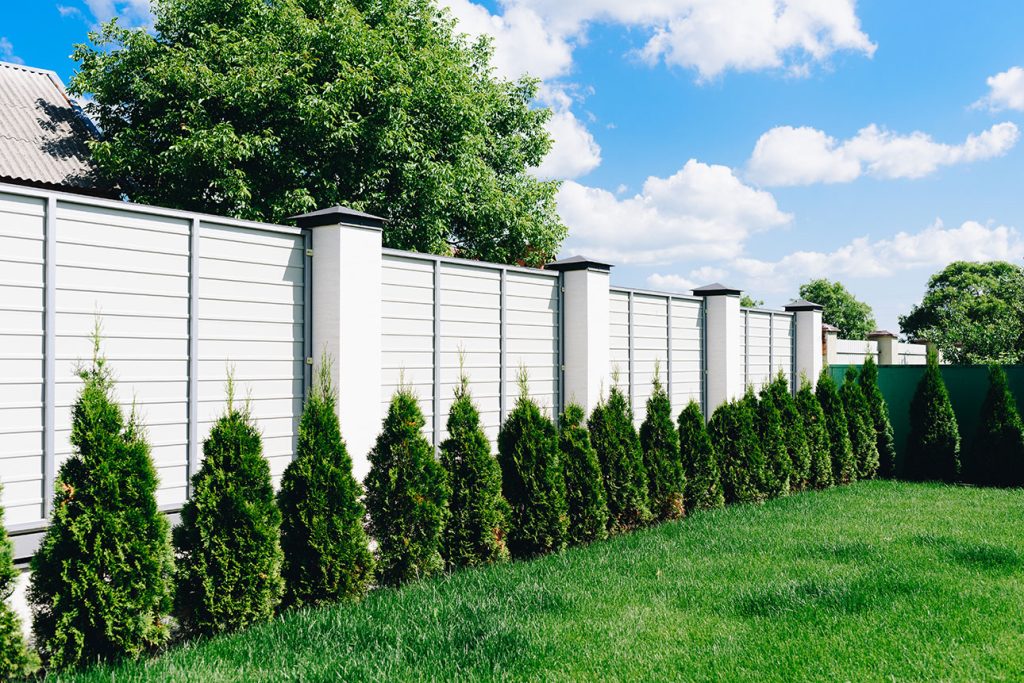A fence line offers the perfect blank canvas to add visual interest and privacy to your outdoor space With the right plant choices, you can create a lush, beautiful backdrop that requires minimal care The key is selecting low maintenance plants that will thrive with little intervention on your part.
When choosing plants for your fence line, opt for hardy, resilient varieties that suit your climate and soil conditions. Avoid fussy plants that need extensive pruning, staking, pest management, or other high-maintenance care. The less work required, the better!
Here are 15 of the best low maintenance plants for fence lines:
Evergreen Shrubs
Evergreen shrubs maintain their foliage year-round, providing consistent coverage and privacy. Popular evergreen choices include:
- Boxwood – A classic hedging plant, boxwoods have small glossy leaves and a dense, mounding form. They tolerate pruning well. Zone 5-8
- Yew – Yews offer soft flat needles and red berry-like cones. They can tolerate shade and resist deer. Zone 4-7.
- Arborvitae – With feathery green foliage, arborvitae grows in a narrow, upright form. It provides great vertical coverage. Zone 3-7.
- Juniper – Available in several forms, junipers offer scale-like blue-green needles. They are tough, adaptable plants. Zone 3-9.
- Holly – Hollies provide glossy, spiny leaves and bright red berries. They thrive with minimal care. Zone 5-9.
Ornamental Grasses
Ornamental grasses add texture and movement to the landscape. Popular grasses include:
- Fountain Grass – This graceful, mounding grass has burgundy foliage and tall blonde seed heads. Zone 5-9.
- Switch Grass – Upright green blades turn golden yellow in fall. Zone 5-9.
- Maiden Grass – Large blue-gray leaves add volume while fall blooms provide interest. Zone 5-9.
Hardy Perennials
Perennials die back each winter but return reliably every spring. Some top perennial picks include:
- Daylily – These carefree plants bloom profusely with little attention needed. Zone 3-9.
- Iris – Bold sword-like leaves and showy blooms in spring. Easy to grow. Zone 3-9.
- Lavender – Silver foliage and fragrant flowers. Needs good drainage. Zone 5-8.
- Tickseed – Cheerful daisy-like flowers over mounds of lacy foliage. Prune spent blooms. Zone 4-9.
- Mint – Vigorously spreading mints offer fragrant foliage. Contain them to control spread. Zone 4-8.
Vines
Vining plants can quickly cover fencing, adding greenery and softening hard edges. Some vines worth considering:
- Clematis – Showy blooms in summer and fall. Give it a trellis for support. Zone 4-9.
- Honeysuckle – Fragrant blooms attract hummingbirds. Allow room to ramble. Zone 4-9.
- Grape – Climbing vines produce edible fruit. Need regular pruning. Zone 4-10.
- Virginia Creeper – Red fall color with minimal care needed. Can get aggressive. Zone 3-9.
Shrubs
In addition to evergreen varieties, deciduous shrubs offer multi-season appeal and bold structure. Popular choices include:
- Forsythia – Profuse yellow blooms announce spring’s arrival. Prune after flowering. Zone 5-8.
- Hydrangea – Large snowball-like blooms in shades of pink, blue and white. Zone 5-9.
- Spirea – Clusters of tiny white, pink or red flowers. Prune in late winter. Zone 4-8.
- Lilac – Fragrant blooms in spring. Tolerates some drought once established. Zone 3-7.
Design Tips
When planting your fence line, follow these tips:
- Mix heights, textures, and colors for visual interest
- Include evergreen and deciduous plants for year-round coverage
- Plant in groups for greater impact
- Space plants appropriately, allowing room to mature
- Add mulch to suppress weeds and retain moisture
- Provide regular water until plants are established
By selecting a variety of hardy, resilient plants suited to your growing conditions, you can create a stunning low maintenance fence line garden. Focus on plants that require minimal care yet provide ample rewards of beauty, coverage, and privacy. Do the work upfront to research and plant appropriately, then sit back and enjoy the view!

Low Maintenance and Easy Shrubs to Grow Around Your Home!
FAQ
What is the best low maintenance plant for a fence line?
Low-maintenance plants for a fence line include succulents, lavender, euonymus, and sedum. These hardy plants require minimal care, thrive in various climates, and add color and texture to your fence line year-round.
What is a fast growing plant for fence lines?
- Passion fruit vine. …
- Honeysuckle. …
- Sweet peas. …
- Potato vine. …
- Trumpet creeper. …
- Spanish flag. …
- Vitis cognetiae. …
- Kiwi vine. Actinidia kolomikta is non fruiting but has stunning variegated foliage.
What is the best plant to grow against a fence?
Given the narrow width and height restrictions of your space, climbers are a great idea. They can be trained to grow vertically along your fence, making efficient use of the available space without spreading out too wide. Climbers like star jasmine or ivy are hardy and can tolerate a bit of wind.
What is the best shrub to line a fence?
Ceanothus are the perfect shrubs for a fence line. Also known as Californian lilac, these evergreen shrubs produce clusters of deep blue flowers against glossy foliage. Ceanothus ‘Skylark’ flowers between May and June. These shrubs benefit from the protection provided by fences, so its a win-win!
